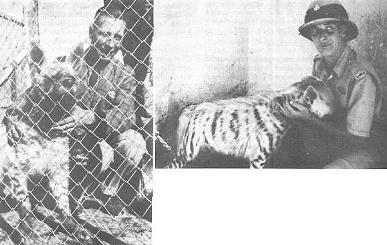|
|
|
|
|
|
|
|
|
|
|
|
|
|
DRAUGHT AND RIDING ANIMALS OTHER THAN HORSES (2)
Around the world, a number of animals are used for riding and draught.
|
|
|
|
|
|
|
|
|
|
|
|
|
|
A PET HYENA

Not a working animal, but an unusual pet! Although hyenas are supposed to be untameable, there are at least two authentic records of them being hand-reared and kept as pets. A female striped hyena called "Ebby" was adopted by American Rose Butler in the early 1900s and kept as a pet for at least 13 years. An abandoned male striped hyena cub was rescued and raised by Englishman Geoffrey J Morton in 1933 while he was serving as a policeman in Palestine. He found the tiny cub while patrolling in the Jordan Valley, and took it back to his quarters in Nazareth. He bottle-fed it and gave it meat scraps. He kept it at the police stables for about a year, taking it out for an evening stroll each day. When he was posted to Haifa he donated his pet hyena to Tel Aviv Zoo.